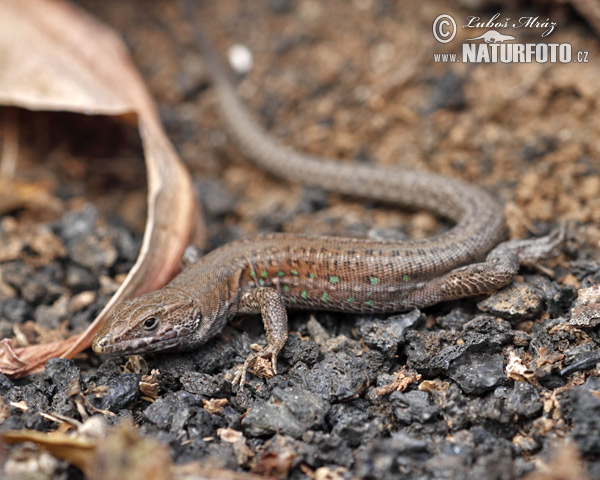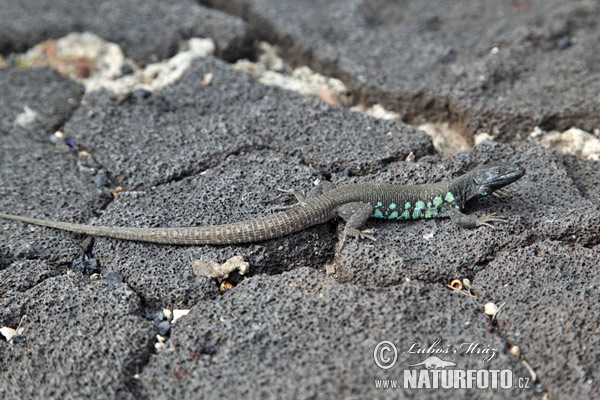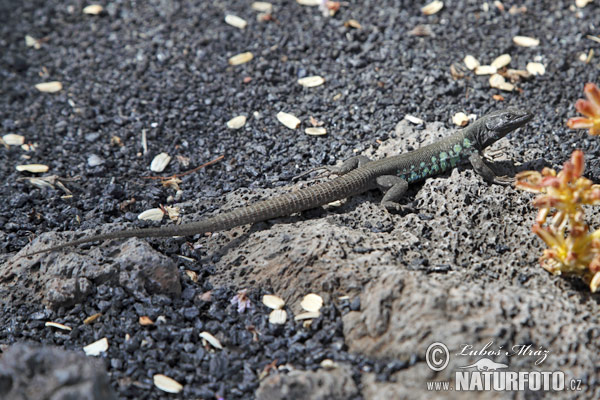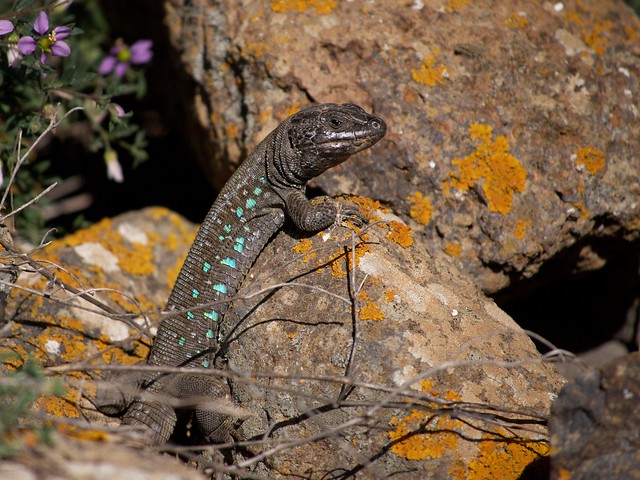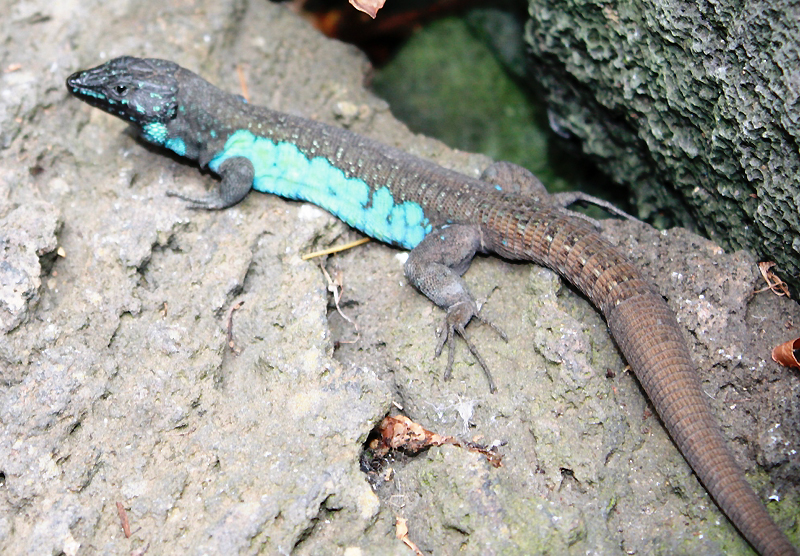Atlantic Lizard
Ostkanareneidechse ( Gallotia atlantica)
Called The Ostkanareneidechse ( Gallotia atlantica), and Atlantic lizard or purple arias Lizard, is a species of lizard of the family Lacertidae.
Features
The Ostkanareneidechse reached a total length of 28.5 inches, making it the smallest species within the genus Gallotia. The males reach a head -body length to 10.8 inches, the females remain slightly smaller with up to 7.3 inches. Your appearance is slim. The head is high and clearly pointed forward. The dorsal scales are keeled and significantly large. The collar is cut at its trailing edge. A large temple plate ( Massetericum ) is missing. The Ostkanareneidechse is highly variable colored and marked. The top is gray to olive-brown in males and females, or even dyed almost black brown. At the border from the back to the flanks on both sides of a bright vertical stripes available. This is especially lined on its inner side by dark spots. On the back and the flanks fine and irregular dark transverse spots are often present, between which there are lighter, smaller spots. All adult animals have on their flanks to a number spots that are bluish, greenish or turquoise. These are usually rounded and of medium size. Their size and number can be very different. They can be small to very large and fuse together to a colorful longitudinal ligament.
In male animals, a metal sheen is on the back often present. Your belly is cream colored and almost always without drawing. In animals with very dark upper side of the abdomen, however, is colored blue-gray. Juveniles have a dark brown color and bright stripes. Her tail is brighter than the rest of the body. In females, the bright longitudinal striation is maintained even in adults while they usually disappears in males.
System
The species is divided into two subspecies:
- Gallotia atlantica subsp. atlantica: This subspecies occurs on Lanzarote and the small island of Graciosa, Montaña Clara, Roque del Este and Alegranza.
- Gallotia atlantica subsp. mahoratae: This subspecies occurs on Fuerteventura and Lobos. On Gran Canaria entrained specimens of Ostkanareneidechse probably go back to animals of Fuerteventura.
Occurrence
The Ostkanareneidechse comes from sea level prior to the highest mountain ranges of their distribution area. So she is on Lanzarote on the encountered Penas del Chache ( 671 meters) and on Fuerteventura on the Pico da la Zarza (807 meters). The species is very undemanding in terms of their habitat, therefore, Fuerteventura and Lanzarote are also inhabited almost everywhere. Only stone loose salt steppes, pure sandy beaches, large scree slopes without vegetation and young lava fields avoids the Ostkanareneidechse. On beaches with shells and rocks and in the intertidal zone on the covered with samphire areas but it is certainly to be found. Here is a sufficient coverage is important. On the man-made habitats such as the edges of places, agricultural land and dumps the species is very common.
Way of life
The Ostkanareneidechse is active throughout the year, a winter rest is not maintained. The mating season begins in March and extends over several months. Eggs are laid from April to July. Presumably, each female per season from two clutches. These usually consist of three eggs ( often 1 to 5). The eggs are 10 to 15 mm long and 7-9 mm wide. The young hatch after 2 to 3 months.
The species feeds mainly vegetable, but also catches insects. In captivity, it was observed that they like to eat small pieces of raw meat. Predators of Ostkanareneidechse are Kestrel, Buzzard, Raven, Southern Grey Shrike and Hoopoe. In addition, Algerian hedgehog ( Atelerix algirus ), Canary shrew and stray dogs and cats eat the animals.
Documents
- Dieter Glandt: Pocket Encyclopaedia of amphibians and reptiles in Europe. Quelle & Meyer Verlag, Wiebelsheim 2010, ISBN 978-3-494-01470-8, pp. 343-346.


